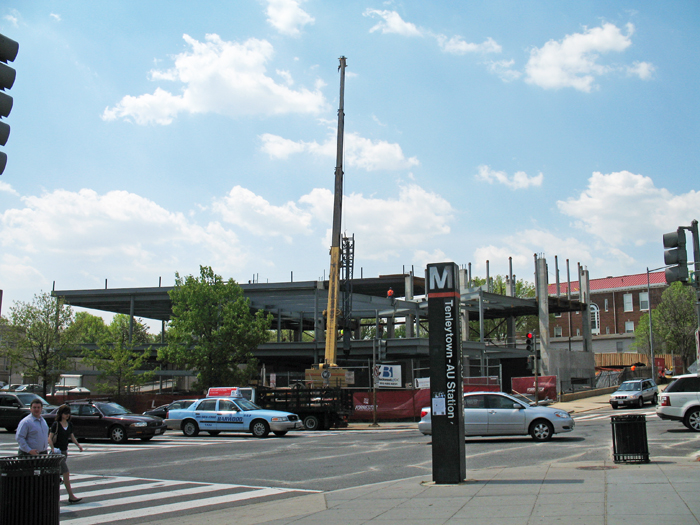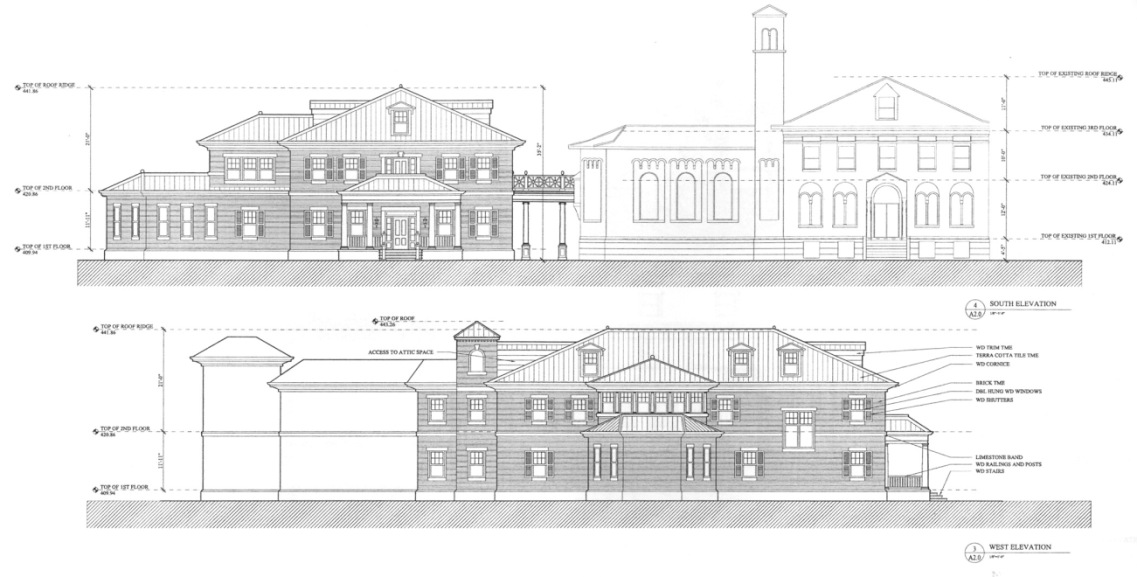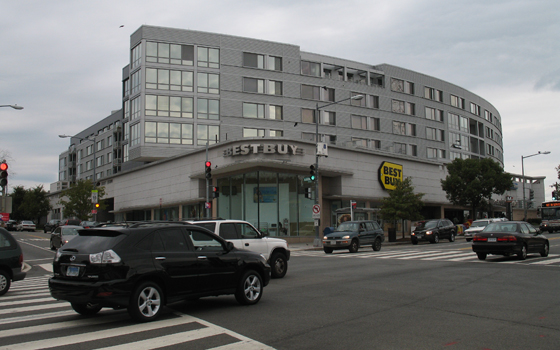As part of a series on things opposed by Tenleytowners, let us discuss the Tenley-Friendship library. Here is a the basic story: a group of opponents, led by Janney parents, protested the loss of critical play space to build a library in Tenleytown and delayed the construction by a few years, until 1959.
Indeed, according to Judith Helm’s monumental history of the area, Tenleytown, D.C.: Country Village into City Neighborhood, when the DCPL began a modernization program for its libraries, they singled out Tenleytown’s inadequate branch. At the time, the Tenleytown library was in a former police substation that was small, dark, and old. But modernity beckoned with its sophisticated information storage technologies, like microfilm. So the downtown overlibrarians decreed from the quietest bowels of their Mt. Vernon Square reading-dome that a new building be built, and that it be built at Albemarle Street.
Their logic was relatively simple, and sounds strangely familiar. The land southwest of Wisconsin Avenue and Albemarle Street was city property with no extant buildings with public transit at its front door. It seemed perfect for the city to use. Unfortunately, in 1955, a playground had already long occupied what was to become the site of 2008’s PPP fight. Even now, the library and the school share the same plat of property (check out this map).
One of the reasons residents opposed the Sears so ferociously in 1940 was that the jungle gym and a few other bits of blacktop stood at the top of a hill right across the street, and perhaps parents feared kids wandering into the new traffic. Then, as now, neighbors worried about auto traffic clogging up the streets, in spite of the streetcars that ran on Wisconsin until 1960. The tactic of throwing the kitchen sink at the project even reared its head.
Some proposed a new library in Fort Reno Park. The park was, after all, close to Murch, Deal, and Wilson, and so better suited to serve all students. That’s amusing because moving the library to the park was tossed around every once in a while in 2009. Both times, this alternative never came to pass. NPS may or may not have wanted to build a parkway through that area. In general, the NPS was as aloof and non-cooperative, just as they can be today.
Then, after five years of folderal, the library opened and people began to forget about the controversy. And here we are again, in 1959.
At top, the third library under construction on April 17, 2010.




